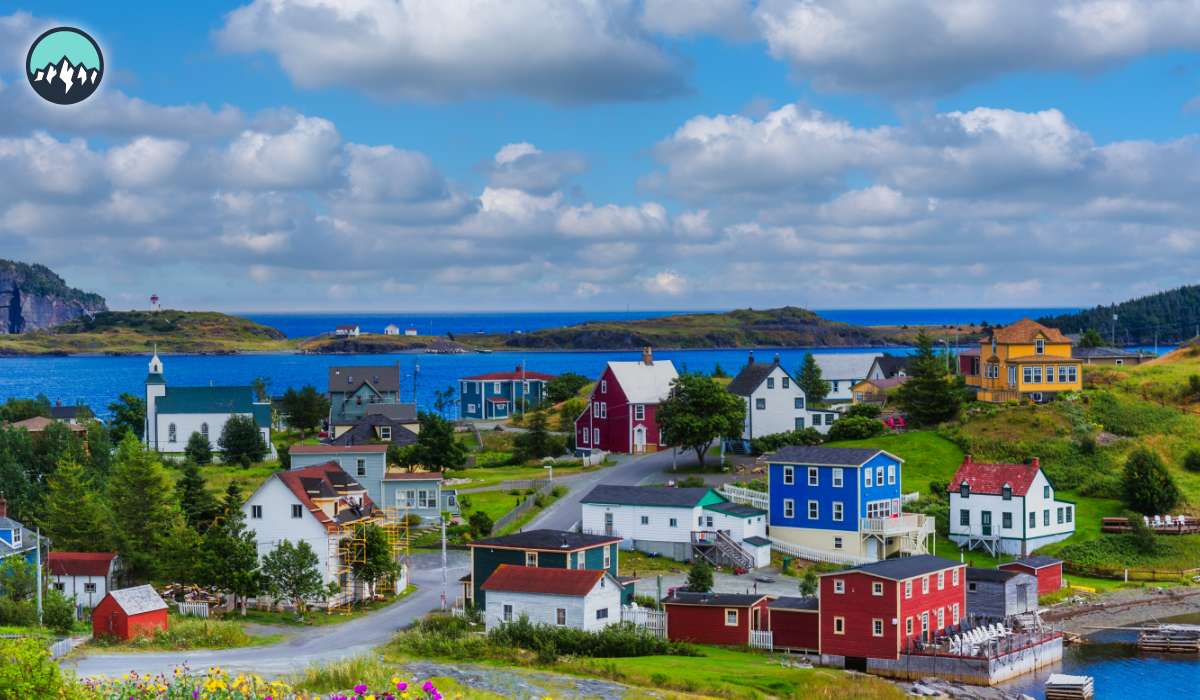Living in Newfoundland and Labrador: What Newcomers Need to Know
09 May 2025

If you're dreaming of a new life in Canada and want a destination that combines natural wonder, cultural richness, and a welcoming community spirit, look no further than Newfoundland and Labrador. As one of Canada’s Atlantic provinces, this eastern gem is not only known for its rugged coastlines and vibrant traditions, but also for its strong sense of belonging and opportunity. Whether you're an adventurer, a professional seeking new prospects, or a family searching for a peaceful and affordable place to settle, this province has something special to offer. This guide will walk you through everything you need to know about making Newfoundland and Labrador your new home.
A Snapshot of the Province
Newfoundland and Labrador, the easternmost Canadian province, offers a unique blend of stunning natural beauty, rich culture, and warm hospitality. The province is made up of two main regions: the island of Newfoundland and the mainland area of Labrador. With a population of just over 500,000, it's one of the least densely populated parts of Canada, which means more open space and less urban congestion.
The capital city, St. John's, is the cultural and economic heart of the province, known for its colourful row houses, historic sites, and vibrant arts scene. Other key towns include Corner Brook, Gander, and Happy Valley-Goose Bay. If you're looking to immigrate to Canada and are seeking a slower pace of life with strong community values, Newfoundland and Labrador might be the perfect place to settle in Canada.
Why Move to Newfoundland and Labrador?

There are several compelling reasons to consider living in Newfoundland and Labrador:
- Affordability: Compared to major Canadian cities like Toronto and Vancouver, the cost of living in Newfoundland and Labrador is relatively low.
- Job Opportunities: The province offers employment opportunities in healthcare, education, natural resources, and technology.
- Natural Beauty: From fjords and forests to dramatic coastlines and national parks, outdoor enthusiasts will find plenty to explore.
- Friendly Communities: Residents are known for their friendliness and sense of community.
- Atlantic Immigration Program: This federal initiative helps skilled workers immigrate to Canada more easily, with Newfoundland and Labrador actively participating.
Settling in Newfoundland and Labrador: Key Steps for Newcomers
To begin your new life in this Atlantic Canada province, follow these key steps:
- Choose the Right Immigration Pathway: Options include the Provincial Nominee Program (PNP), Atlantic Immigration Program (AIP), or Express Entry.
- Secure Housing: Whether you’re renting or buying, sites like Realtor.ca and Kijiji can help you find suitable housing.
- Get Your Health Card: Apply for the Medical Care Plan (MCP) as soon as you arrive.
- Open a Bank Account: Choose from Canadian banks like RBC, TD, or Scotiabank.
- Register Your Children in School: Public education is free for children up to grade 12.
- Learn English or French: If needed, enrol in government-funded language programs.
- Find Employment: Use local job boards, recruitment agencies, and government resources like Job Bank Canada.
The Cost of Living in Newfoundland and Labrador
The cost of living in Newfoundland and Labrador is moderate compared to other Canadian provinces. Here's a general overview:
- Housing: Rent for a one-bedroom apartment in St. John's ranges from 800 CAD to 1,200 CAD per month.
- Groceries: Expect to spend around 300 CAD to 500 CAD per month for a family of two.
- Utilities: Monthly utilities for a standard apartment typically cost 150 CAD to 250 CAD.
- Transportation: Public transit is available in larger towns, with monthly passes costing around 80 CAD. Owning a car may be necessary in rural areas.
Embracing Newfoundland and Labrador Culture and Lifestyle
One of the most enriching parts of living in Newfoundland and Labrador is immersing yourself in its unique culture. The province is known for:
- Music and Arts: Traditional Irish and Celtic influences are strong, with lively music festivals and arts events year-round.
- Cuisine: Local favourites include Jiggs' dinner, toutons, and fresh seafood.
- Festivals: From George Street Festival to the Iceberg Festival, there's always something to celebrate.
Storytelling and Folklore: Oral traditions are cherished, and you'll find many locals ready to share a tale or two.
Newfoundland and Labrador Weather

Newfoundland and Labrador's climate varies significantly between the island and the mainland:
- Newfoundland: Generally has a moderate maritime climate. Winters are snowy but milder than mainland Canada; summers are cool and pleasant.
- Labrador: Experiences a subarctic climate with harsher winters and shorter summers.
Prepare for sudden changes in weather, especially along the coast. Dressing in layers and investing in quality winter gear is essential.
Building a Community
Creating a support network is key when you settle in Canada. In Newfoundland and Labrador, you can build community through:
- Cultural Associations: Many towns have multicultural organizations to support newcomers.
- Volunteering: A great way to meet people and gain Canadian experience.
- Local Events: Attend community fairs, workshops, and festivals.
- Religious and Faith Groups: Churches, mosques, and temples often host newcomer-friendly events.
Challenges to Be Aware Of
While there are many benefits to living in Newfoundland and Labrador, newcomers should also be aware of potential challenges:
Job Market Competition
Even though Newfoundland and Labrador offers employment opportunities, some sectors can be competitive. Newcomers in specialized fields may need to be flexible and proactive in their job search, particularly outside major urban centers.
Weather Adaptation
The climate - particularly in Labrador - can present difficulties for those unaccustomed to cold environments. Winters bring heavy snowfall and temperatures that can drop below -25°C, requiring proper winter gear and home preparations.
Limited Public Transport
Outside St. John's and other urban centers, public transportation options are minimal. Residents in rural areas often require personal vehicles, and winter driving conditions demand extra caution and proper tires.
Access to Services
Remote communities may have limited access to specialized healthcare, advanced education programs, and certain retail services. Residents in isolated areas often travel to regional centers for specific medical treatments or educational opportunities.
Final Tips for Newcomers

Embarking on your Canadian journey? Keep these tips in mind to make the most of your new life in Newfoundland and Labrador:
Stay Informed
Follow local news outlets like CBC Newfoundland & Labrador and The Telegram to stay updated on community events, weather alerts, and provincial regulations.
Get Involved
Join community centers, cultural associations, or volunteer groups to build relationships and learn about Newfoundland traditions like kitchen parties and mummering.
Be Patient
Cultural adaptation typically takes 6-12 months. Celebrate small wins and connect with other immigrants through NL newcomer networks.
Use Settlement Services
Take advantage of free programs from organizations like the Association for New Canadians (ANC), including language classes, job search support, and cultural orientation sessions.
Pro Tip: Download the GovNL app for quick access to provincial services, emergency alerts, and important updates!
FAQs
Is Car Ownership Necessary?
While St. John's has public transit (Metrobus), most rural areas require personal vehicles. Winter driving essentials include snow tires (mandatory Dec 1-Apr 30) and an emergency kit. Consider converting your foreign license within 90 days.
What Immigration Programs Are Specific to Newfoundland and Labrador?
The province participates in the Atlantic Immigration Program (AIP) and offers Provincial Nominee Programs for skilled workers, international graduates, and entrepreneurs. The NL Priority Skills Program focuses on tech and healthcare professionals.




